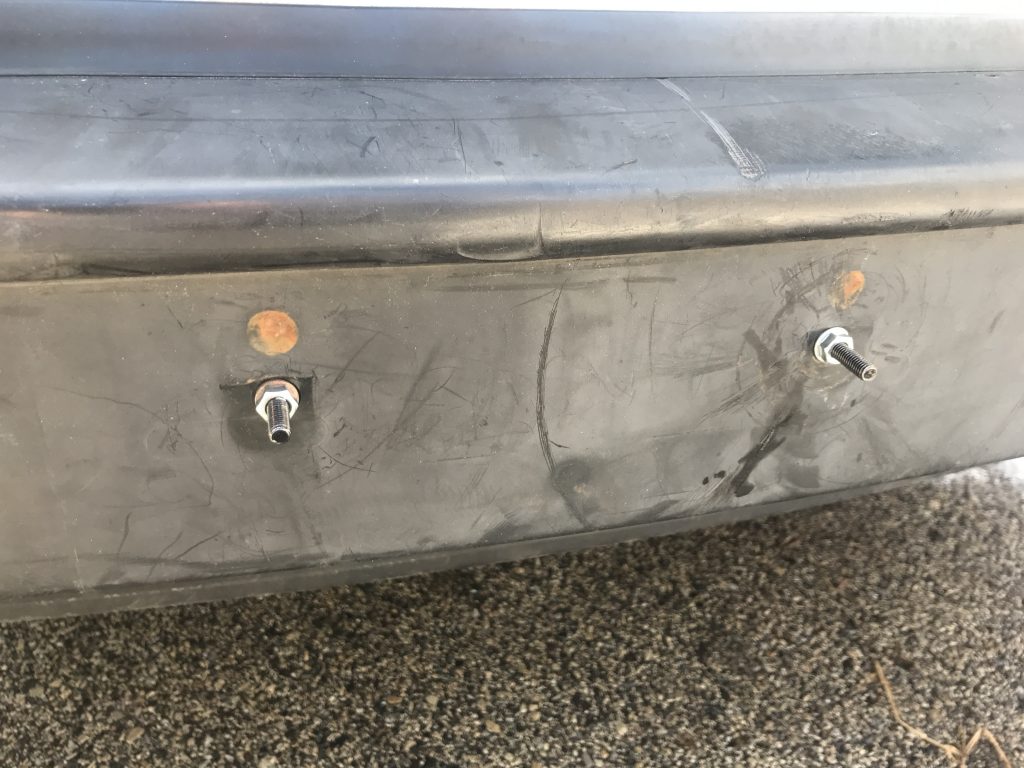In Pennsylvania, the state where I live, only the rear of the car requires a license plate. This leaves an empty space in the front for novelty plates and other such things. It’s typical for people restoring old European cars to decide to put a euro-plate of some sort on it. Some look at this as silly and perhaps even a little tacky. I’m not one of those people.
Finding a Plate
The first thing to do was to decide what sort of plate to put on the car. The obvious choice would be to get a Swedish plate from the early 90s. No thanks. Too easy! My wife happens to be from the Czech Republic, so I figured why not a Czech plate? They drove Volvos there too. So I went to eBay dot com and found lots of people selling foreign license plates. I get the idea that there exists a collecting culture for these things. I quickly found a number of Czech plates including one in the format from the 90s before Czech became a full member of the EU. This meant no EU blue field on it. It also came with a number assigned to the city of Pilsen, a nice place I’ve actually been to a number of times on account of my wife having family there. That works for me, so I bought it.
Making a Mounting Bracket
After a long and weirdly winding path through a number of USPS depots in and around New England my plate finally arrived. As you probably know, European license plates are a different shape than American plates. My car had holes in the front bumper on which to mount an American plate. It used to have the standard Volvo plate holder attached to it but I had taken that off awhile ago as it was broken and pretty bent up. The new Czech plate had two holes for mounting that were approximately 17 inches apart. the easiest and most direct way to mount the plate would have been to drill new holes in the bumper in the appropriate places and be done with it, but I did not want to do this.
I did look around for an adapter. Amazon had quite a few of them but they were surprisingly expensive. Like, more expensive than the plate itself. That wouldn’t do. Instead I went to my local Autozone to see if they had something that would work. Sadly they did not, but they did have a sort of minimalistic universal plastic bracket that I though I could make work with a bit of fiddling.
Taking a piece of flat hardware store aluminum I had laying around from another project I cut two pieces approximately 6 inches in length. I then drilled holes at either end of each and countersunk one side. The plastic bracket I had bought had slots on either side. Using bolts with countersunk heads, I attached the flats to either side as sort of “wings” whose positions could be adjusted laterally by about an inch or so.

The bracket is recessed on what it calls its front side which provided a convenient place to hide the connecting nuts. In my usage that side would become the back. The end result was a center section that fit an American plate but with adjustable mounting points for a European plate. Best of all it only cost me about $6 plus stuff I had around my shop.
Attaching the Plate to the Bumper
To get it on the car I took a couple of bolts and fed them through the bumper from the back side and locked these in place with flange nuts. This gave me a couple of threaded studs onto which I could attach the mounting plate. Unfortunately the most suitable bolts I had (some leftovers from a TV wall mount kit I had bought) were a little too long. This would have interfered with the plate’s fitment, so I corrected the problem with the judicious use of a hack saw.

Once they were out of the way I attached the plate to the holder, and that was that.

I know this is a pretty silly thing, but I think it adds a nice touch to my Euro-box of a car, and if I ever get tired of it everything I’ve done was non-destructive and easily reversible.